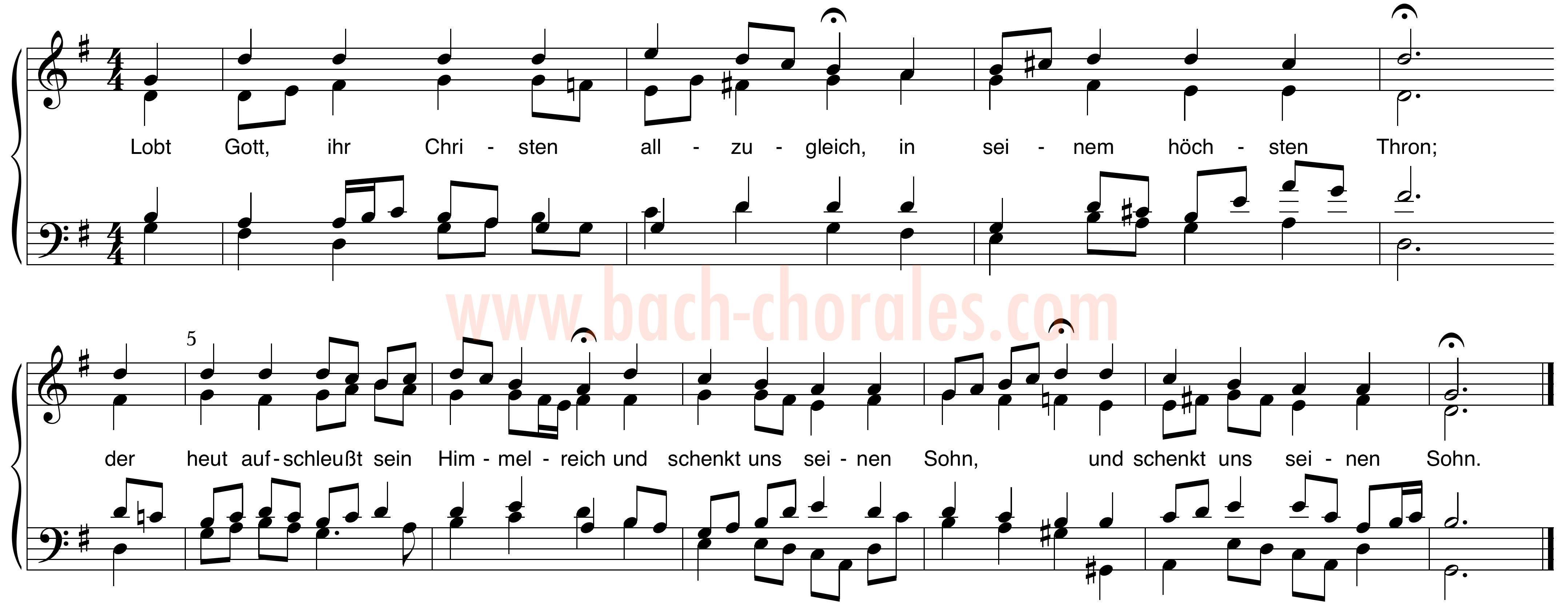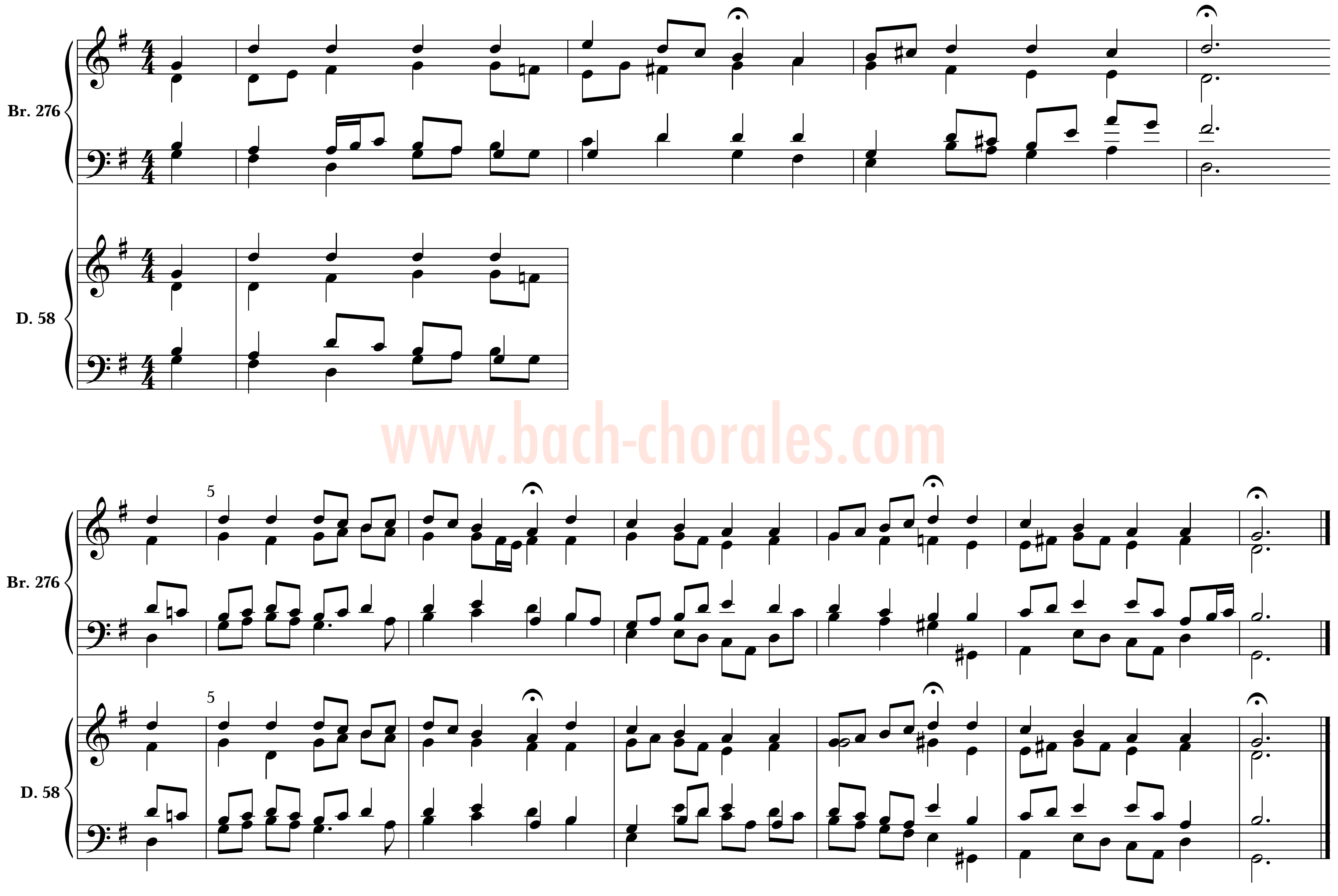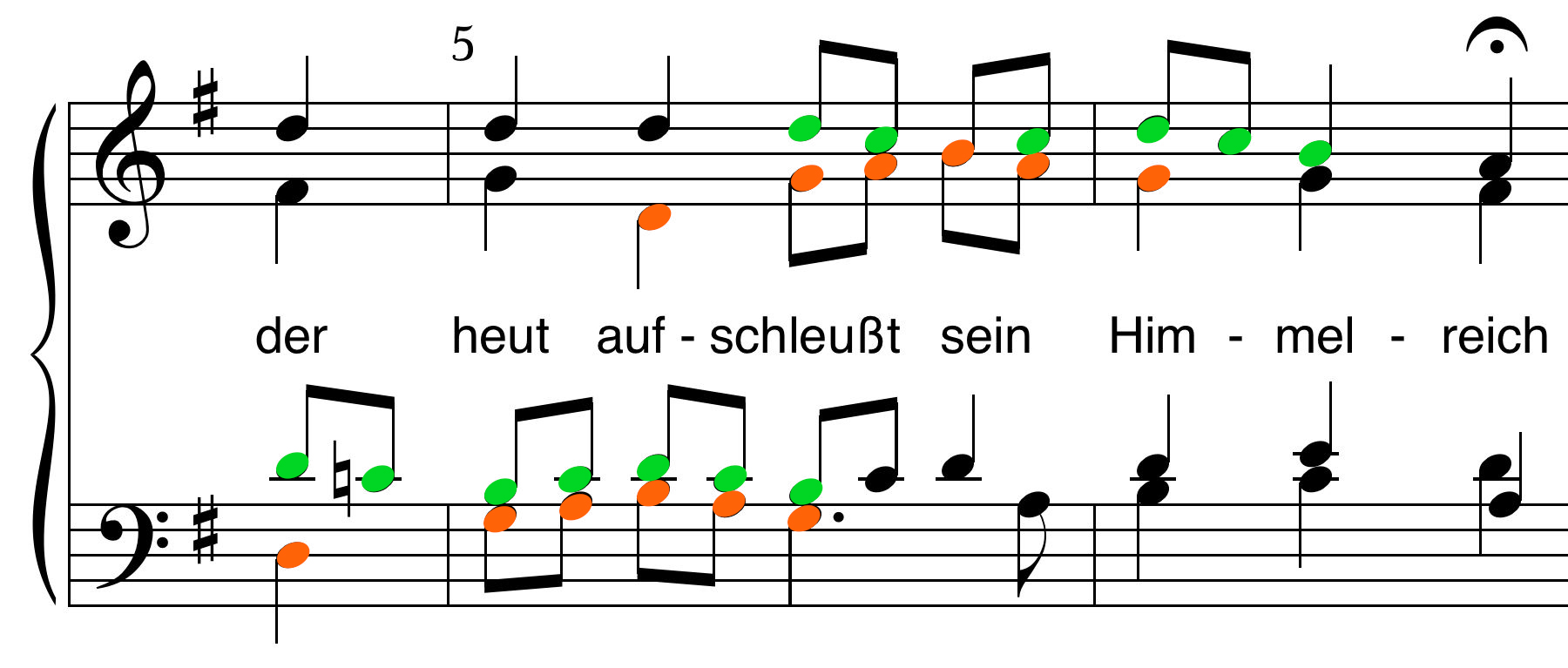 |





|
BWV 375

Previous: BWV 374
Next: BWV 376
Original source: Chorale, Lobt Gott, ihr Christen allzugleich, BWV 375
Chorale Text: Lobt Gott, ihr Christen, allzugleich*, by Nikolaus Herman (1560)
Tune: Kommt her, ihr lieben Schwesterlein, by Nikolaus Herman (1554), possibly based on an earlier melody (Zahn 198)
First Performance: Unknown*
Appearance in Early Collections (Key):
Riemenschneider 276;
Breitkopf 276;
Dietel 58*;
AmB 46II p.270
Other Harmonizations: BWVs 151.5, 195.6, 376
Notes
This chorale survives without text. The text that appears here is the one provided by editors of the Bach Gesellschaft Ausgabe (BGA).
Speculation regarding liturgical occasion: This chorale possibly served as the closing number for either the Picander–Jahrgang cantata Dies ist der Tag, den der Herr macht for Epiphany (Picander 11) using the 8th verse of Heut schließt er wieder auf die Tür (according to Häfner) or the Picander–Jahrgang cantata Der Herr ist mit mir for the Purification of Mary (Picander 27). (See NBA III/2.2 KB, p.284 or III/2.1 KB, p.62)
View a complete listing of speculations regarding the liturgical occasions of individual BWV 253–438 chorales.
Dietel variant: The setting presented above corresponds to both the Breitkopf publication and the AmB 46II manuscript. The chorale appears in the earlier Dietel manuscript in variant form. The two versions are shown side–by–side below.

Since nothing is known for certain about who is responsible for any divergences in the chorales as they appear in posthumous chorale collections (e.g. the AmB 46II manuscript, the Birnstiel and Breitkopf publications) when compared to the chorales’ appearances in the extant choral works, we can only make speculations. For this particular chorale, no extant manuscripts exist. However, the divergences shown here when compared to the early Dietel version of this chorale resemble the kinds of emendations reflected in those Breitkopf chorales that can be compared with extant manuscripts.
For instance, in measure 5, the alto̵s beat 2 note has been changed from F# to D. While the F# may result in smoother voice–leading and a slightly better chord structure, it disrupts the integrity of the bass–alto imitation (starting on the pickup into m.5). The suggestion that such canonic imitation is intentional here can be further supported by the similar at–the–octave relationsip between tenor and soprano: D–C–B–C–D–C–B.
BWV 375, measures 5–6, Dietel Version

Secondly, the adding of embellishments at cadences (as in measures 6 & 9–10), particularly when involving sixteenth notes, is a common feature among Breitkopf chorales that is absent in chorales surviving from extant manuscripts. This particular stylistic discrepancy has been thoroughly documented by Gerd Wachowski (See "Die vierstimmigen Choräle Johann Sebastian Bachs. Untersuchungen zu den Druckausgaben von 1765 bis 1932 und zur Frage der Authentizität," Bach–Jahrbuch, Vol. 69 (1983), pp.51–79.)
Finally, the change in the tenor on measure 7, beat 4 from E–A to E–D is similar to other modifications made presumably by editors of posthumous chorale collections that "correct" what are considered to be instances of faulty part–writing. Here, consecutive fifths in contrary motion are created between tenor and bass (E–A above A–D), remembering that the bass vocal line is generally doubled at the lower octave by the continuo. The correcting of such instances of questionable part–writing for later chorale collections has been documented here: "Consecutive Fifths & Octaves in the Bach Chorales."
In sum, since we can only speculate, the kinds of differences between these variant settings would seem to suggest that an editor has made modifications to the setting in order to improve the voice–leading. Such a scenario is perhaps further circumstantially supported by the fact that these early collections were intended to serve as models of exemplary counterpoint.
[Personal side note: I must admit that the measure 8 cadence in the Breitkopf version — the alto’s chromatic descent to the F–natural creating a viio7/ii, which is subtly transformed into a V65/ii on beat 4 by the alto’s continued descent to E — is so utterly stunning, one of my favorite cadences in all the chorales, that it must without question be considered an improvement upon the Dietel version. —LD ]
bach–chorales.com by Luke Dahn. Copyright 2018.